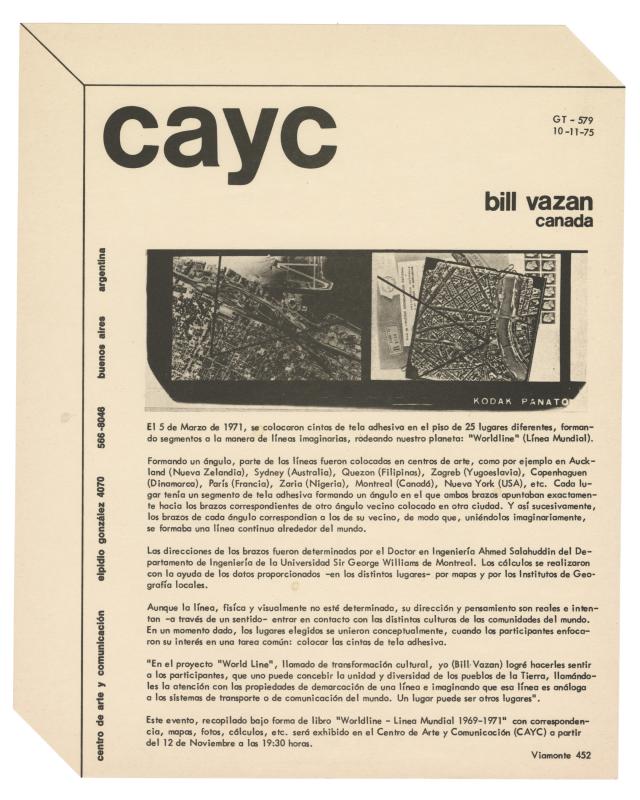Ever since it was founded, the CAYC (Centro de Arte y Comunicación), helmed by the cultural promoter, artist, and businessman Jorge Glusberg, was intended as an interdisciplinary space where an experimental art movement could flourish. The establishment of collaborative networks connecting local and international artists and critics played an important role in this process. The exhibitions shone a light on these exchanges, in which overviews of trends or individual artists provided an introduction to the innovations of international contemporary art and made Argentine and Latin American artists better known on the global scene.
Since the early 1960s, the Canadian artist Bill Vazan (b. 1933) has produced artworks that combine Land Art with painting, sculpture, and photography. Seeking to explore the relationship between human life and the cosmos, Vazan imbues his work with knowledge derived from a variety of different sources, including science.
According to the description in the newsletter (the text begins in GT-579; doc. no. 1477272), in his project Worldline (1969–71), Vazan sought to connect twenty-five art institutions in different cities with a virtual line that circled the globe. To achieve his goal, he collaborated with Ahmed Solahuddin, PhD in engineering, who used computer-generated geodesic calculations to track the segments that connect each point, taking into account the curvature of the Earth.
Vazan’s work is entirely in line with what the CAYC promoted as “arte de sistemas,” that is, a practice based on processes. In order to emphasize its ephemeral nature, his project is exhibited via the documents that have been produced: calculations, correspondence, maps, and photographs that, together, document the work’s development.

